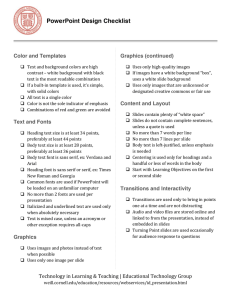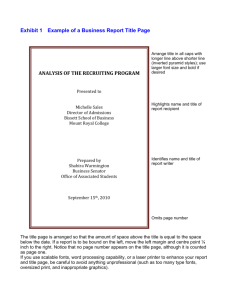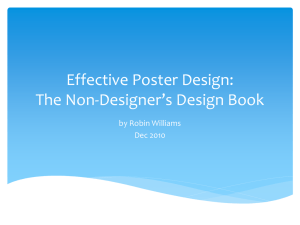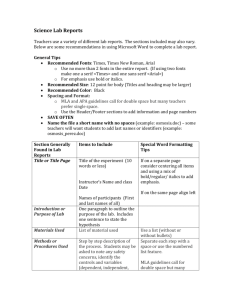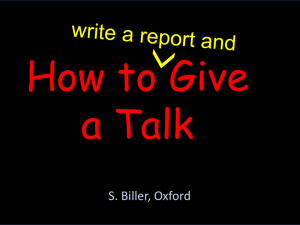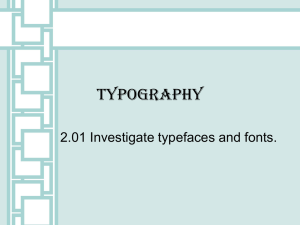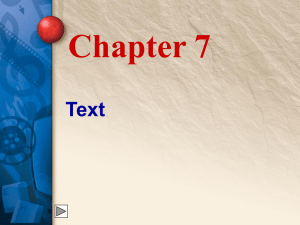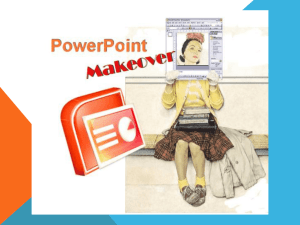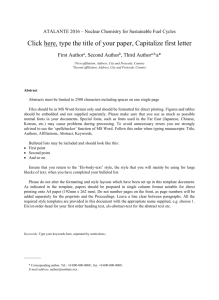Desktop Publishing
advertisement
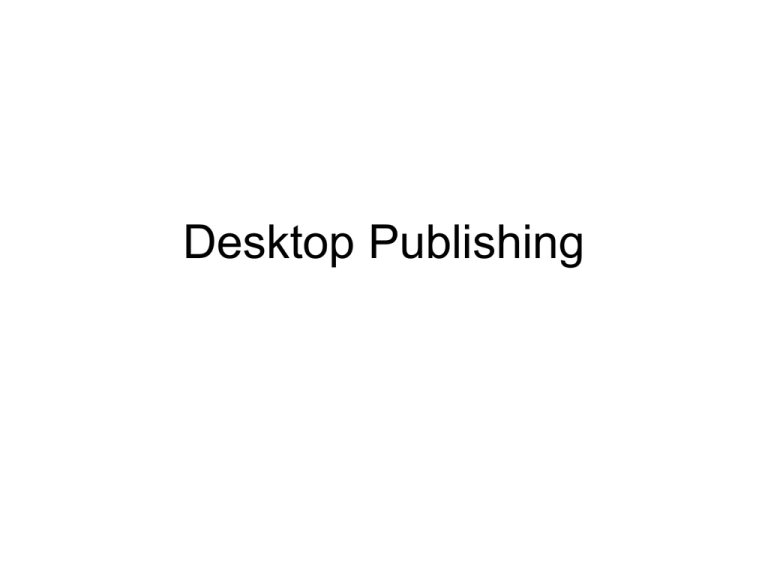
Desktop Publishing What is it? • Describes the process of producing a document using a personal computer • Not just about creating brochures and flyers • Products must be hard copy and able to transfer to the Internet How to create amazing documents • Audience – Who is this document for? – Describe changes you would make for different types of audiences. How to create amazing documents • Purpose – What is the point? • • • • Inform Advertise Get advice Meet a requirement – What purpose do the images play? • Each image must have a purpose How to create amazing documents • Layout – Thumbnail Sketches • Quick sketches that allow you to “think” on paper • Blocks of sections of the page for certain things • Allows you to better visualize your document Principles of Design • Focal Point – The place your eye sees first – Larger is noticed before smaller – Brightly colored text is noticed before black text – Images are noticed before text • Pages without a focal point can be confusing Principles of Design • After creating a focal point, the reader must be encouraged to continue reading • Flow – The visual path created by arrangements of elements within a page – Z-pattern is most common – Images, white space, and text will create the flow Principles of Design • Layout – Using a grid will help divide your page • Rule of thirds – A page that is designed in thirds is more appealing Text Image White space Text Image Image White Image Space Text Text T e x t Image White Space Text Text White Spac e White Space White Space Fonts • Serif is divided into categories – Oldstyle is used for long passages – Modern has harsher strokes – Slab serif fonts have little difference between strokes – Sans serif very even strokes, resulting in an easier read Special Fonts •Decorative fonts are used for display • Script fonts are designed to imitate handwriting • Blackletter fonts are designed to look like early hand-print font • Monospace fonts resemble spacing produced by a typewriter Font rules! • The fewer fonts the better • Making font bold or italic can help you create sections or importance •If you mix two typefaces, make them very different Color • Color scheme is the arrangement of colors designed to create a particular response. • Color wheels can help you select complementary colors • • • • • • • • • • • Black – classic, strong, powerful, mysterious, elegant Blue – tranquil, peaceful, sad, dependable, cool, constant, quiet Brown – wholesome, rich earthy, home-like, stable, rustic Green – soothing, refreshing, healing, natural, fresh Neutral – classic, quality, natural, timeless, quiet Orange – Sharp, friendly, vital, hot, energizing, inviting Pink – happy, sweet, romantic, youthful Purple – elegant, eccentric, regal, spiritual, mysterious Red – sexy, exciting, stimulating, provocative, dynamic White – pure, bright, innocent, clean Yellow – harmonious, warming, sunny, splendor
